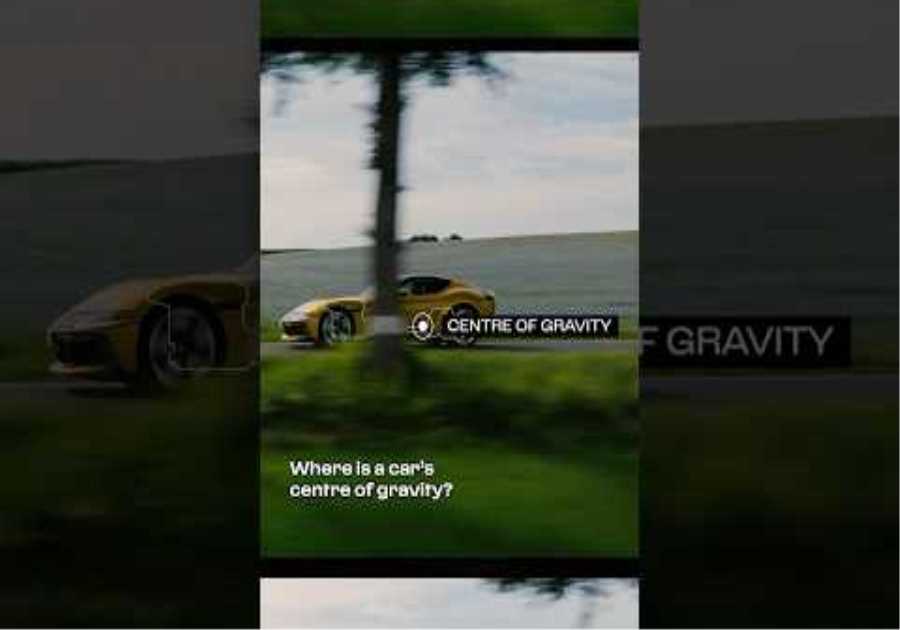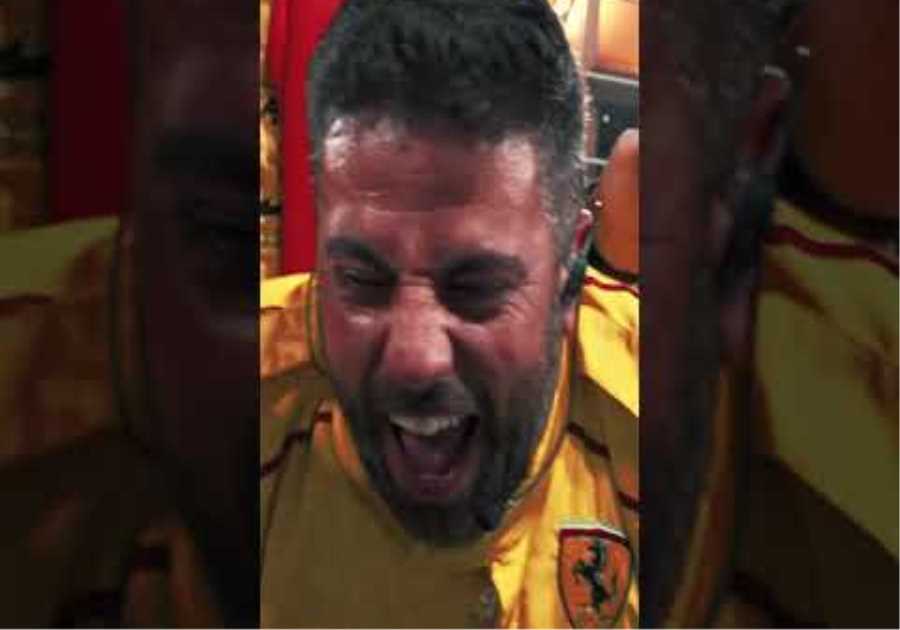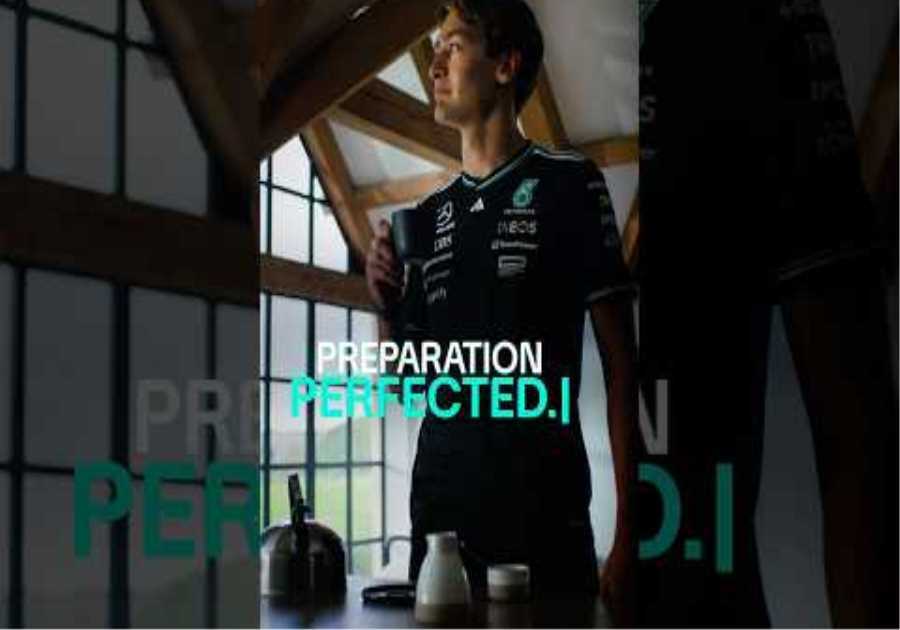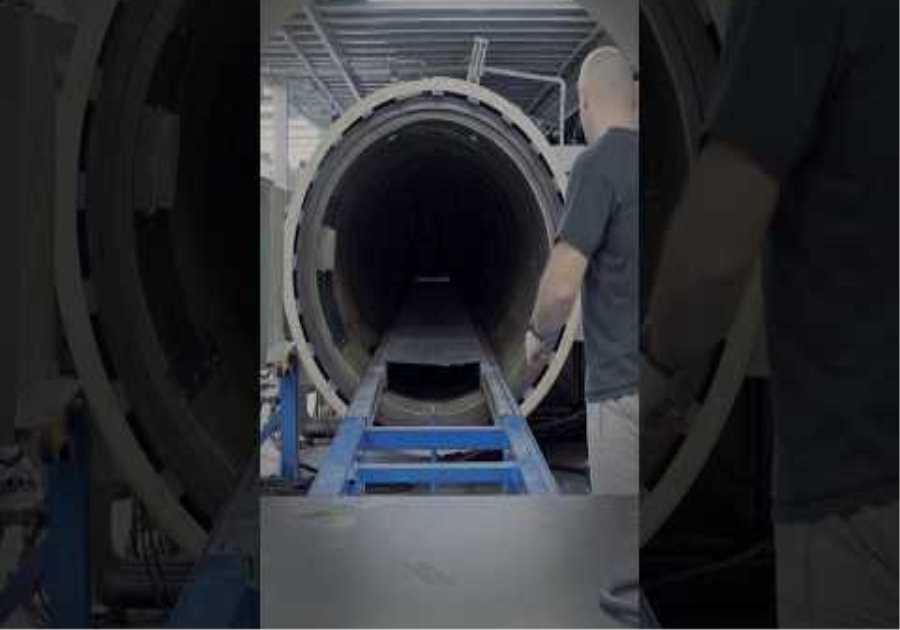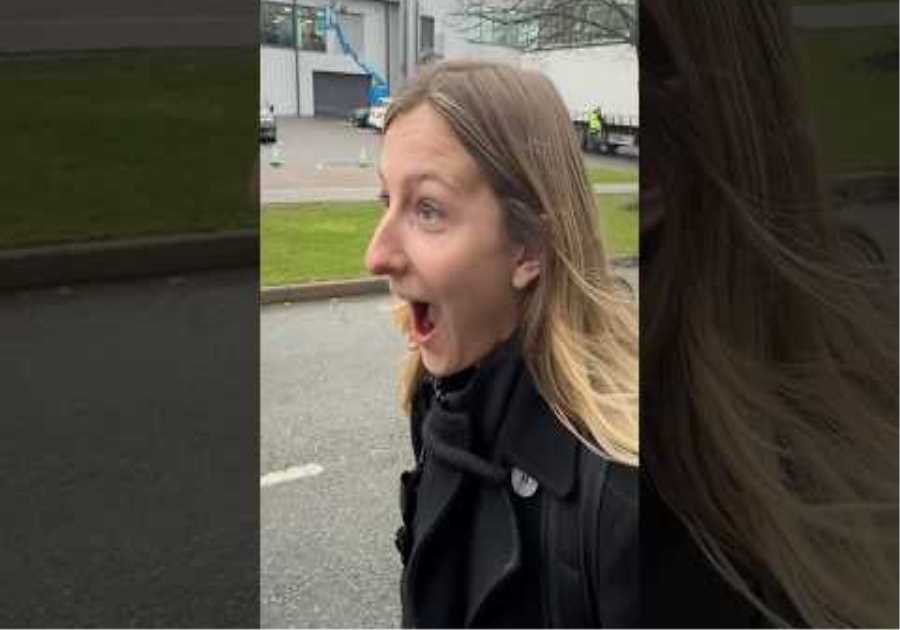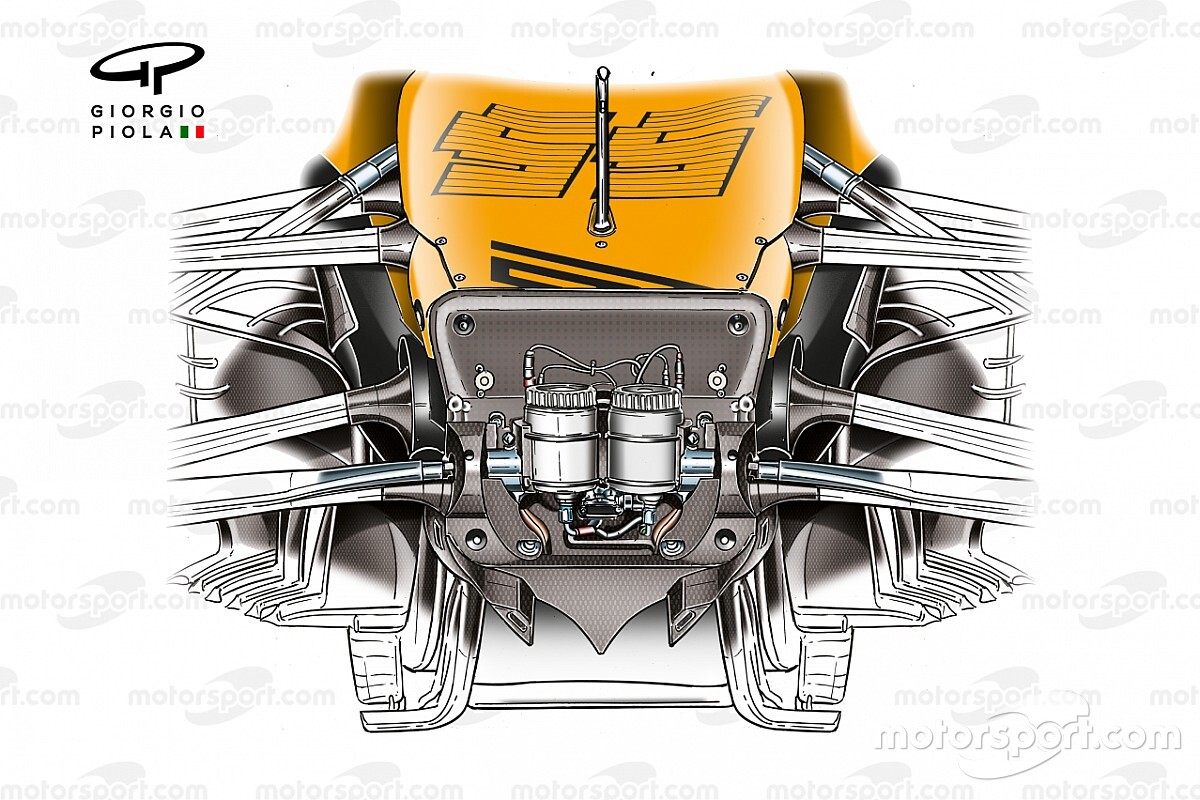
The second Grand Prix in as many weeks was delivered again on the upgrade front as the teams work hard to recover from the time lost during the lockdown. A number of teams had new pieces not only to improve their performance this week but also to stay ahead for the Hungarian GP and beyond.
Also read:
Ferrari
The Scuderia have been left behind by their main rivals for some time, with the winning streak between Belgium and Singapore last season seem like a distant memory. The subsequent sanctions for operating the engine obviously hit them hard, but the aerodynamics package also seems to have gone in the wrong direction.
The team rushed through some of the new parts updates originally planned for the Hungarian GP for the second race in Austria to stop the slide and get the bug properly under control. The update included a new front wing and floor, both of which changed the way in which the aerodynamic surfaces account for the wake vortices created by the tires.
Ferrari SF1000 front wing, GP Styria
Photo by: Giorgio Piola
Changes to the front wing (insert) include a new footplate as the team is reverting to a domed design instead of the flat version they have been using for some time. Several changes have been made to the top flaps, with the outermost section now connected to the endplate at a lower point and also changing the internal geometric shape.
Also read:

Ferrari SF1000 ground comparison, GP Styria
Photo by: Giorgio Piola
The teams used the slots at the bottom edge as a means of controlling the wake vortices created by the front tire and limited uptake by flow structures that “seal” the bottom edge. Ferrari had chosen to use three fully closed longitudinal holes in front of four angled holes just in front of the rear tire.
The new design shortens these longitudinal holes in favor of more holes with an angle of 45 degrees in front of the rear tire. These holes help limit the effects of tire splash on the diffuser, forcing the airflow sideways into the diffuser path and robbing it of performance if not controlled.
The horizontal flap that Ferrari mounted above the floor has also been modified, using a more twisted profile where it connects to the vertical strake to enhance its impact. These changes suggest that Ferrari had gone too far in its quest to control front tire caster, resulting in a loss of performance and stability at the rear of the car.
Red Bull
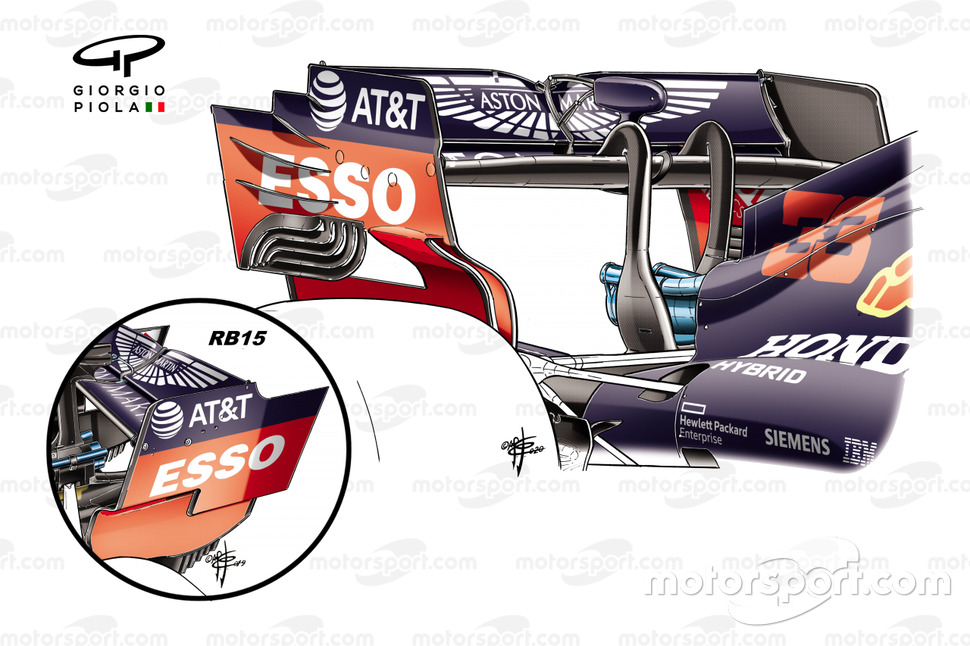
Red Bull Racing RB16 rear wing end plate comparison
Photo by: Giorgio Piola
Red Bull had a new rear wing available for the second race of the season, which was not only significantly more complex than its predecessor (which was very similar to that of last year’s RB15, see box), but also had some distinguishing features that have already been seen elsewhere the grille up and down.
Also read:
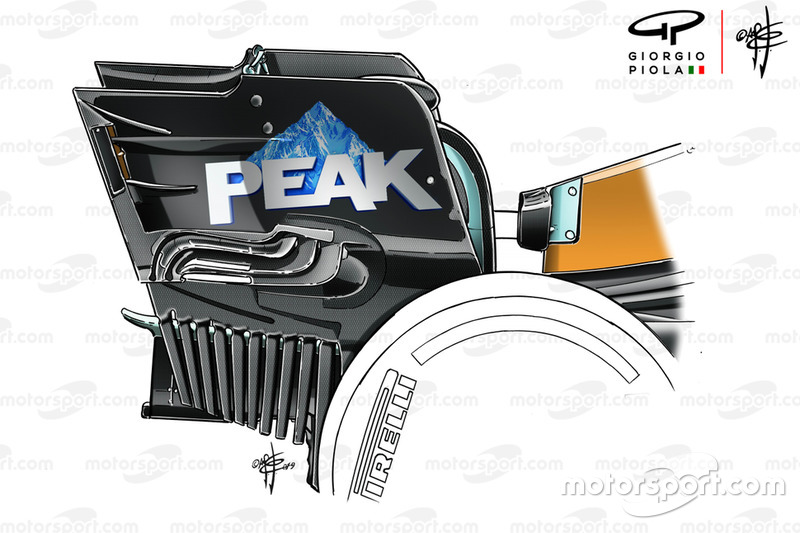
Haas F1 Team VF-19 rear wing detail
Photo by: Giorgio Piola
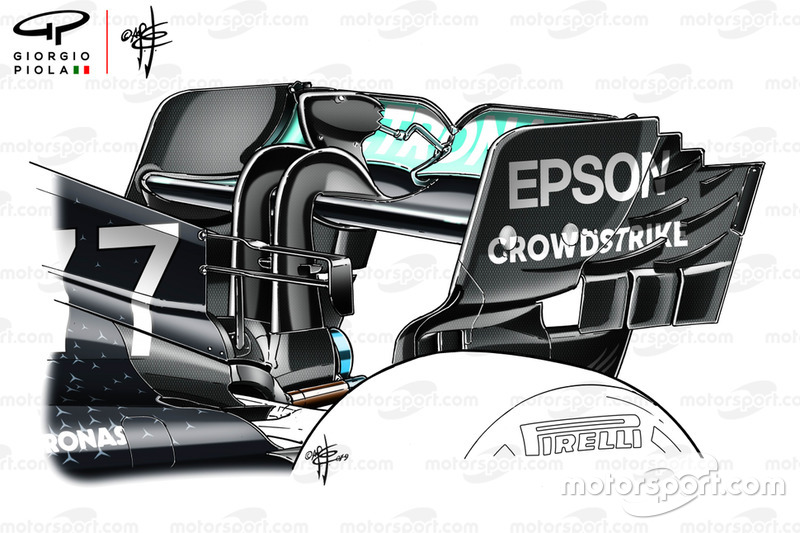
Mercedes AMG F1 W10 rear wing detail
Photo by: Giorgio Piola
Haas (top left) and Mercedes brought fresh ideas to the 2019 German Grand Prix, Haas with its curved hanging wings and Mercedes with its jagged upper rear cutout, both of which have found their way into the design package of the RB16.

Toro Rosso STR14 rear wing detail
Photo by: Giorgio Piola
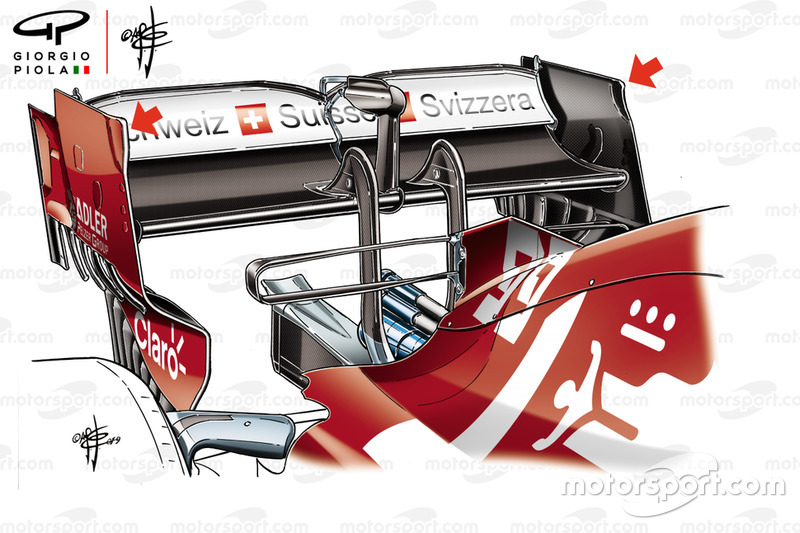
Alfa Romeo Racing C38 detail rear wing
Photo by: Giorgio Piola
A design concept that was first seen on the STR14 sibling (top left) and later on the Alfa Romeo is also available. The designers fold the upper front corner of the endplate to deliberately affect the airflow differently and, along with the curved hanging louvers, the jagged rear cutouts and the newly added updraft strikes, serve to determine the strength of the tip vortices and the overall ratio of air resistance to the downforce of the wing.

Red Bull RB16 rear wing detail
Photo by: Andy Hone / Motorsport Images
It appears that Red Bull needs to work on the structural integrity of the new hanging strake design, however, as both drivers finished the race without them and are likely to suffer from an imbalance. It seems that the team was not convinced by the updates introduced at the first race in Austria as none of the riders drove the new nose or floor (below).
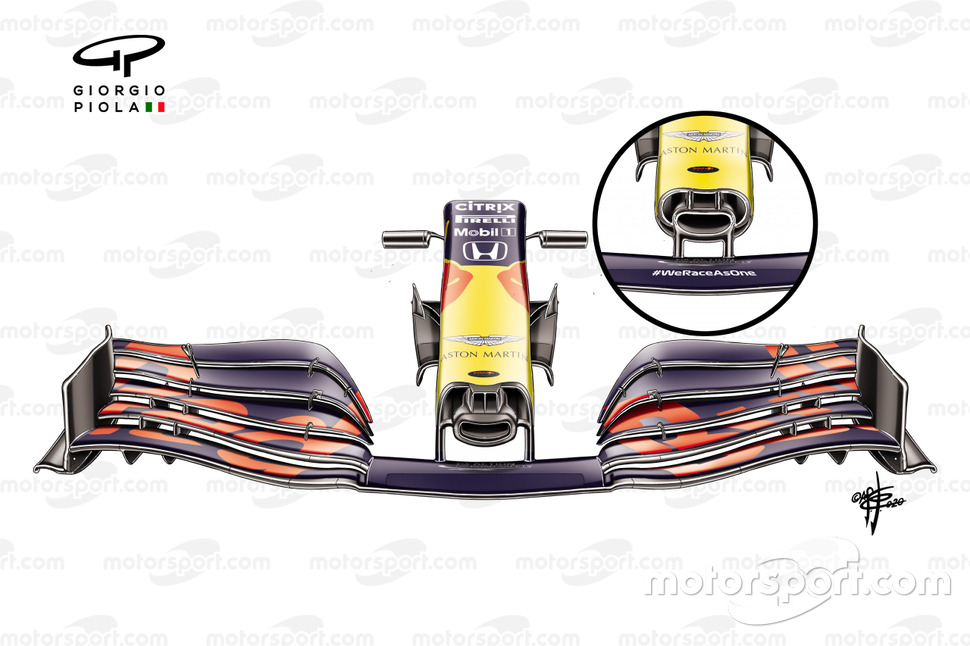
Red Bull Racing RB16 front wing Austrian GP
Photo by: Giorgio Piola
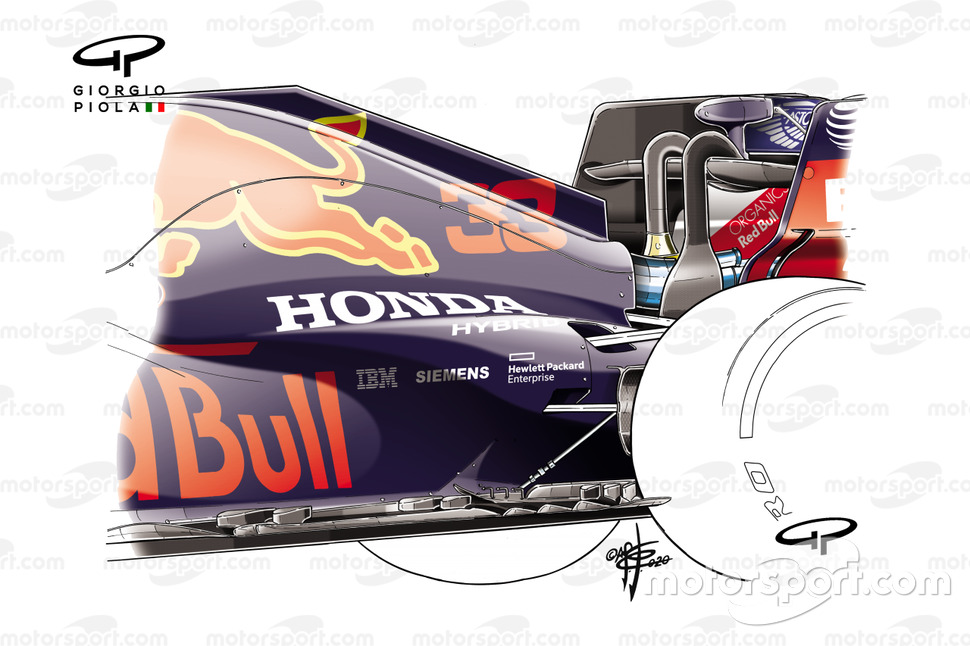
Red Bull Racing RB16 floor
Photo by: Giorgio Piola
McLaren

McLaren MCL35 chassis front
Photo by: Giorgio Piola
McLaren continues to impress, with the MCL35 proving to be even more maneuverable compared to its competitors than the team may have imagined. This illustration above shows a novel solution as the team uses a triangular chin spoiler under the chassis which no doubt helps direct the airflow towards its intended destination.
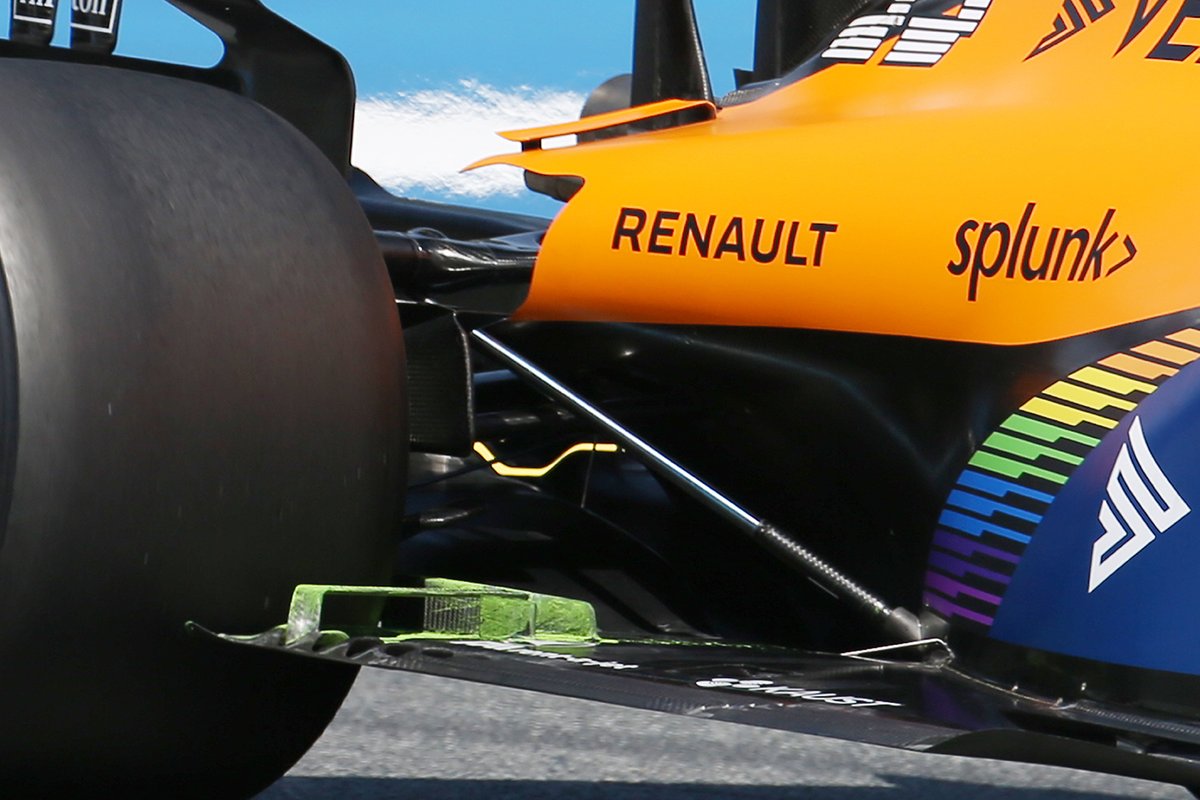
McLaren MCL35 floor detail
Photo by: Giorgio Piola
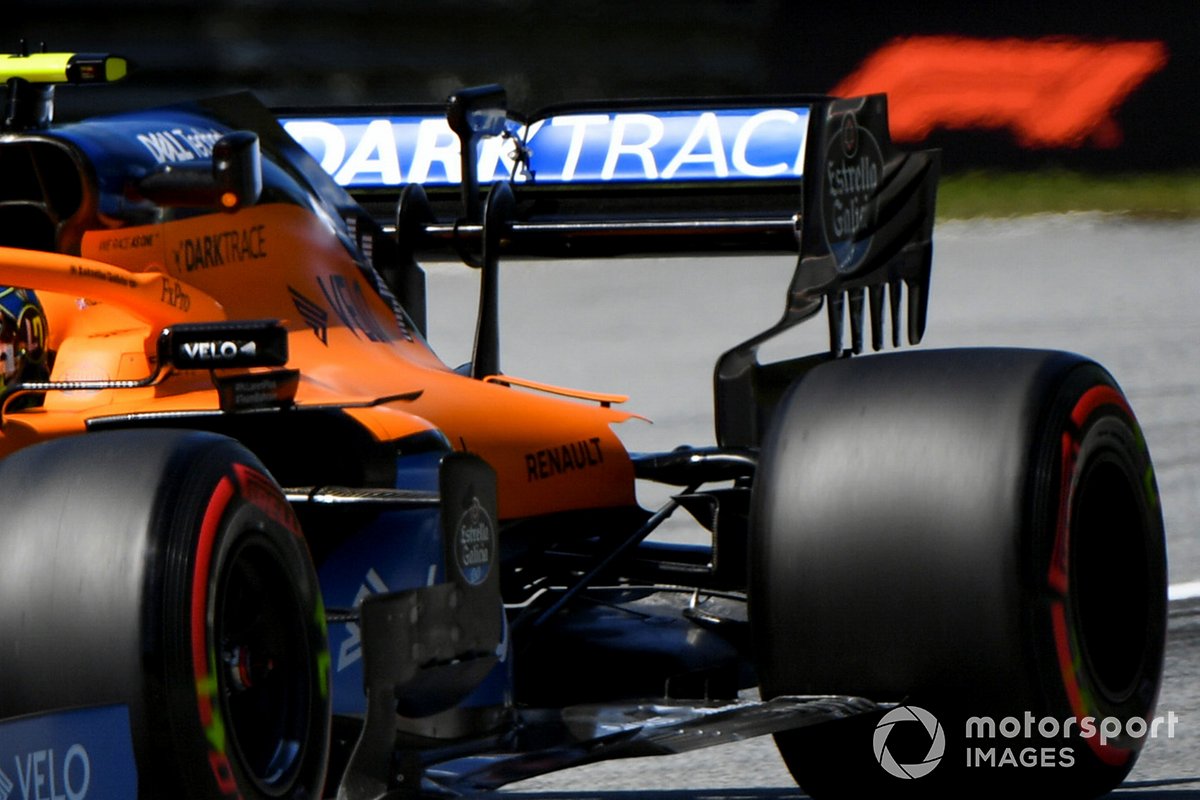
McLaren MCL35 engine cover detail
Photo by: Mark Sutton
The team also used some time in free practice at the second race in Austria to test some experimental parts and cooling solutions that it will use in Hungary. The picture (top left) shows the new flooring solution tested by McLaren, which is similar to Ferrari’s, with an over-the-floor flap in front of the rear tire that is connected to the vertical floor stretcher.
Since temperatures in Hungary are likely to have an impact on performance, the team reevaluated a solution that we saw from previous years in which a flap is placed on the trailing edge of the cooling vent that acts like a Gurney flap Heat from the outlet below.
Also read:
Williams
Another team that impressed in Saturday’s wet weather was Williams with a collection of smaller parts that were used on the FW43 to boost its performance. Although it slipped back during the race, the signs are encouraging that the team is starting to turn a corner.
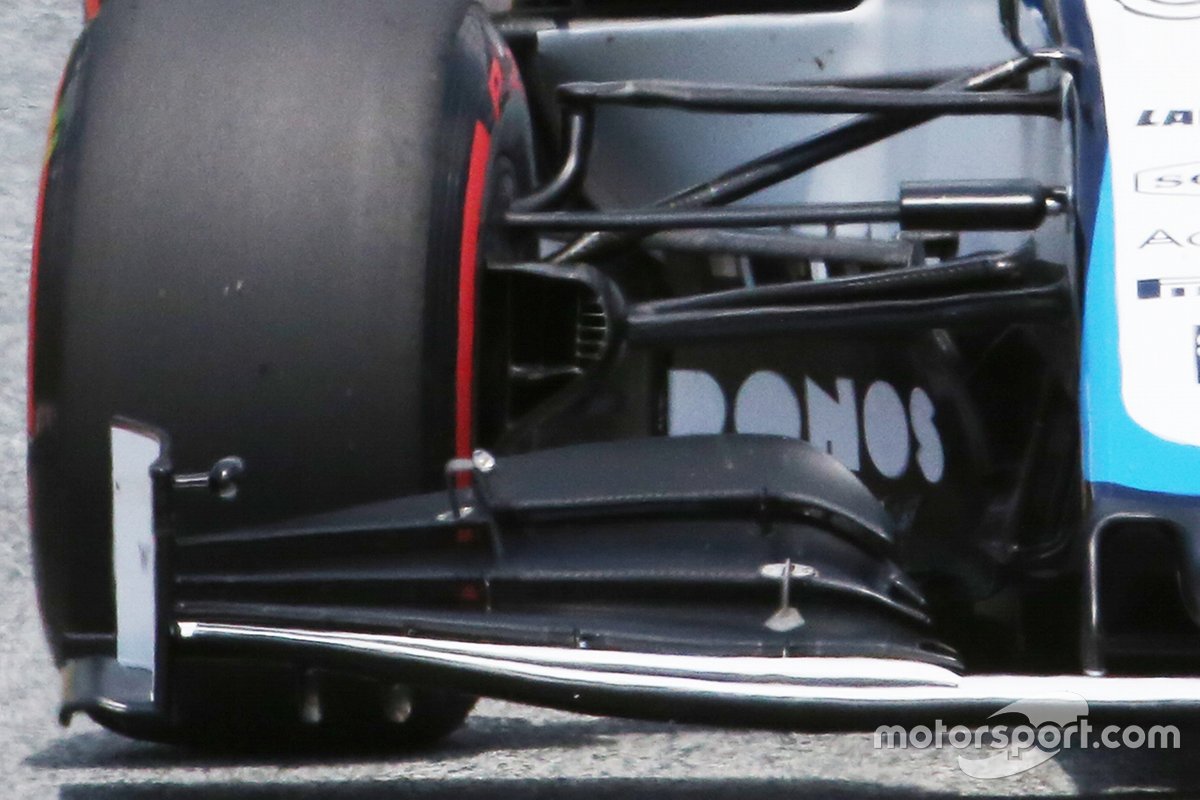
Williams FW43 bracket detail
Photo by: Giorgio Piola
Tested in free practice on the first race weekend in Austria, this weekend the team again evaluated a new, slimmer steering knuckle extension that should bring aerodynamic advantages without losing structural integrity.
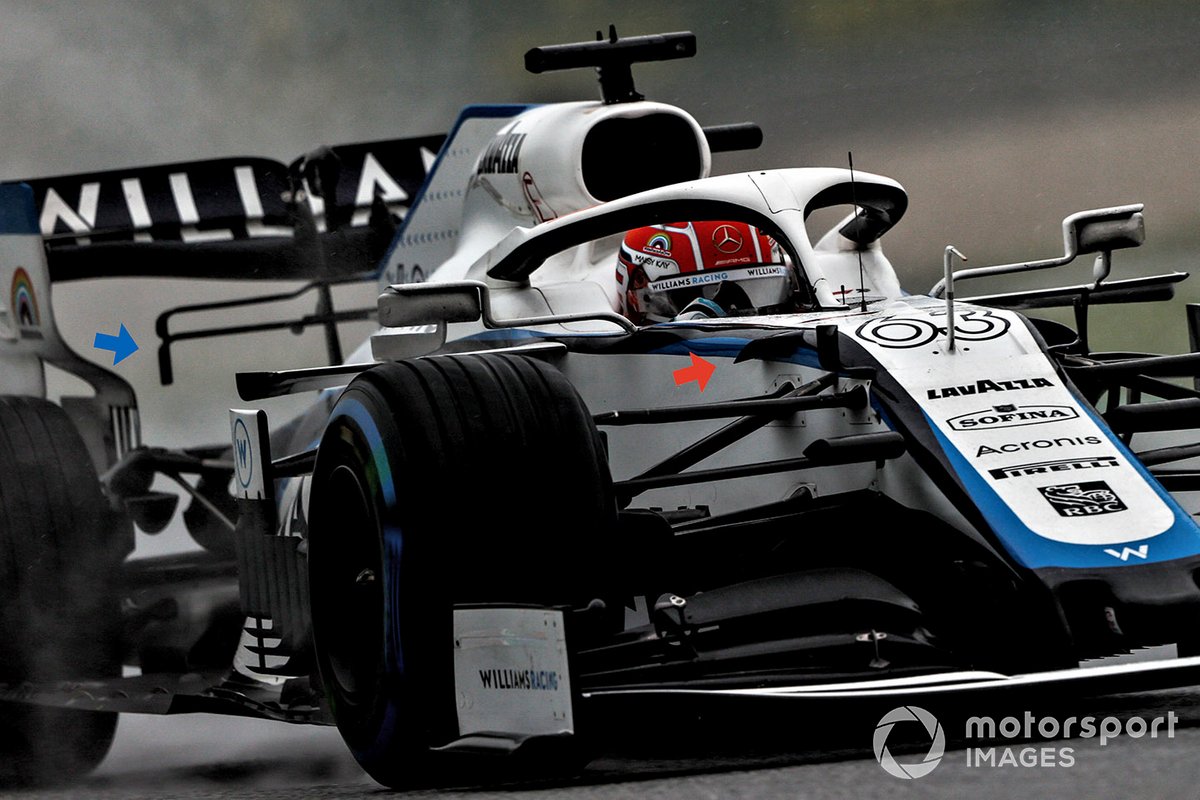
George Russell, Williams FW43 Downwash Fin & T Wing Detail
Photo by: Andy Hone / Motorsport Images
Both riders had a new T-wing available (blue arrow), with an elongated end plate that was used to influence the surrounding airflow that the previous looped variant did not have.
There is a new chassis fin on the front of the car on the right side of George Russell’s FW43 (red arrow) which is an interesting asymmetrical feature as they have an air-to-air intercooler on one side of the car and a normal one Engine coolant cooler on the other.
Also read:
The post Ferrari, Red Bull, McLaren & Williams first appeared on monter-une-startup.Did you miss our previous article...
https://formulaone.news/red-bull/aston-martin-unveils-the-valkyrie-spider-a-convertible-with-f1-technology

